Saucony vs Brooks Running Shoes
Last Updated: January 01, 2025 | Author: Jake Thompson
While many runners spend considerable time obsessing over the latest technology in running shoes, it's often the subtle differences that dictate whether Saucony or Brooks will be the better fit for an individual's stride and style. I've spent years lacing up both brands, each heralded for their innovation and dedication to the sport, yet it's the intricate details—and how they interact with a runner's unique biomechanics—that capture my professional curiosity.
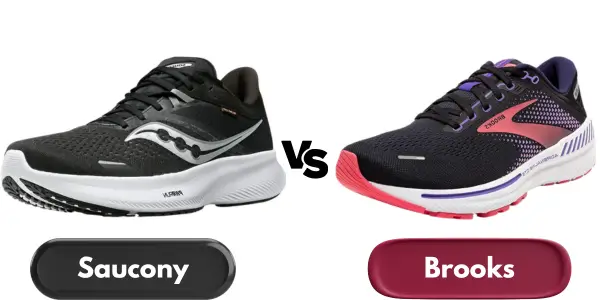
Saucony prides itself on a 'run for good' philosophy, emphasizing lightweight and responsive designs, while Brooks stands firm on their 'run happy' promise, focusing on cushioning and a smooth ride. As someone who's dissected the minutiae of their shoe technologies and taken both to the pavement for rigorous testing, I'm poised to share insights that could very well influence your next training session.
The question remains: when the rubber meets the road, which brand will carry you to the finish line, meeting not just your functional needs but also the nuances of your personal running ethos? Join me as we explore the contours of this debate, and perhaps together we'll find the answers that elevate our running game.
Table of Contents:
- Key Takeaways
- Table: Saucony vs Brooks Running Shoes
- Pros & Cons
- Brand Overview
- Performance
- Design and Technology
- Upper Construction
- Midsole & Outsole Features
- Stability and Support
- Cushioning
- Durability
- Our Recommendations
- Final Verdict
- Frequently Asked Questions
Key Takeaways
- - Both Saucony and Brooks are reputable running shoe brands accepted by the American Podiatric Medical Association (APMA).
- - Saucony offers a wider range of shoe options, including casual shoes, while Brooks exclusively focuses on designing running shoes.
- - Saucony running shoes tend to have a narrower fit overall, while Brooks running shoes have a wider toe box, designed for runners with wide feet or bunions.
- - Saucony primarily uses PWRRUN technology for cushioning, which is lighter and more flexible, while Brooks uses various foam materials for cushioning, such as DNA LOFT and DNA AMP.
Table: Saucony vs Brooks Running Shoes
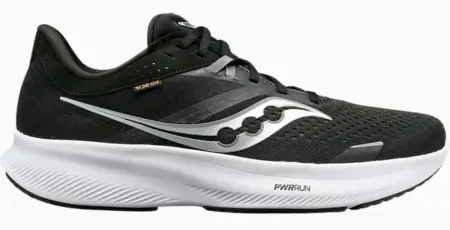
|
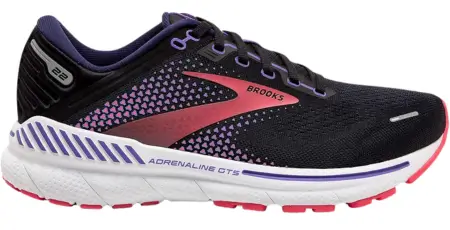
|
|
|---|---|---|
| Aspects | Saucony | Brooks |
| Founded | 1898, in Kutztown, Pennsylvania, USA. | 1914, in Philadelphia, Pennsylvania, USA. |
| Specialty | Running shoes and athletic wear. | Running shoes and athletic apparel. |
| Product Range | Offers a wide range of running shoes, including trail and road running, as well as athletic apparel. | Primarily focused on running shoes, with a strong emphasis on road running and a range of athletic apparel. |
| Technology | Known for technologies like EVERUN and PWRRUN cushioning, FORMFIT design. | Known for BioMoGo DNA cushioning, GuideRails support technology. |
| User Experience | Often praised for comfort and durability, with a focus on performance running. | Renowned for their comfort and support, particularly for long-distance runners. |
| Sustainability | Commitment to sustainability through materials and production processes. | Strong focus on sustainability, with initiatives like biodegradable shoes. |
| Notable Models | Saucony Cohesion, Guide, Ride, and Triumph series. | Brooks Ghost, Adrenaline, and Glycerin series. |
| Price |
Pros & Cons
Saucony Running Shoes
Pros- - Snug fit ideal for runners with narrow feet
- - Lightweight enhances speed and agility
- -Responsive cushioning uses innovative PWRRUN technology
- - Narrow toe box not suitable for wide feet
- - Higher price slightly more expensive
Brooks Running Shoes
Pros- - Wider fit comfortable for wide feet
- - Diverse range suitable for various running needs
- - Focus on running specialized in running technology
- - Less variety in casual shoes limited non-running options
- - Potentially bulky might feel heavier for some runners
Brand Overview
Delving into the brand overview, it's evident that both Saucony and Brooks have established a strong presence in the running shoe market through their continued dedication to innovation and specialized design.
Saucony, established in 1898, is an American brand renowned for its innovative running shoes and apparel. Known for advanced technologies like the GRID cushioning system, Saucony caters to both casual and professional runners. They emphasize environmental sustainability, incorporating eco-friendly materials and practices in their diverse product range, including trail and racing shoes.
Brooks, founded in 1914, specializes exclusively in making running gear, particularly noted for its high-quality shoes. The brand focuses on individual biomechanics, offering technologies such as the GuideRails support system for enhanced comfort and injury prevention. Brooks' "Run Happy" philosophy promotes accessibility and enjoyment of running, underscored by their community-building efforts and participation in running events.
Related: Brooks vs Asics Brooks vs New Balance
Performance
Building on the foundation of innovative design and specialized cushioning systems, I'll now examine how both brands perform under various running conditions and workouts. Here's what I've found:
1. Cushion and Energy Return:
- - Saucony's PWRRUN midsole balances cushion and energy return, which is particularly noticeable during long runs.
- - Brooks often incorporates DNA LOFT and BioMoGo DNA technologies that provide a plush feel without compromising responsiveness.
2. Durability and Midsole Integrity:
- - The durability of Brooks' shoes is complemented by their midsole's ability to maintain structural integrity over time.
- - Saucony also offers robust construction, but the longevity of cushioning can vary depending on the model.
3. Heel-to-Toe Transition and Biomechanics:
- - Both brands have engineered their footwear to support a smooth heel-to-toe transition, catering to a runner's gait and biomechanics.
- - Brooks' GuideRails technology is designed to enhance this by keeping excess movement in check, while Saucony's lower drop options promote a more natural running form.
Design and Technology
Turning our attention to design and technology, I'll assess the upper construction, midsole, and outsole features of Saucony running shoes vs Brooks.
My focus will be on the technical aspects, such as materials used, construction quality, and the intended biomechanical benefits.
This comparison will highlight how each brand's technological innovations contribute to the performance and comfort of their footwear.
Upper Construction
How do the upper constructions of Brooks running shoes vs Saucony differ in design and technology, and what implications do these differences have for runners?
When examining the uppers, we notice:
1. Saucony often employs an engineered mesh upper which provides a breathable and lightweight experience. These shoes also integrate a flexible design, promoting a snugger fit that contours to the foot's shape.
2. Brooks shoes feature uppers designed for a spacious toe box, offering a more relaxed fit. Their engineered mesh is structured for durability and comfort, accommodating a wider range of foot shapes.
3. Both brands utilize advanced fabrics and weaving technologies to ensure their shoes are lightweight without sacrificing support, but Saucony tends to focus more on creating a closer, performance-oriented fit.
These design choices influence the shoe's breathability, fit, and overall performance on the run.
Midsole & Outsole Features
While the upper construction sets the stage for a comfortable fit, the midsole and outsole designs play critical roles in the overall performance and longevity.
Saucony's midsole technology, PWRRUN, offers a delicate balance between cushioning and energy return, while TPU elements enhance durability.
Brooks counters with their proprietary DNA Loft and BioMoGo DNA, both engineered to provide the right plush shock absorption without sacrificing responsiveness.
In terms of outsole construction, Brooks utilizes their unique Gliderails system to aid in stabilizing the foot, a feature especially beneficial for runners with a pronation tendency.
Both brands have intricately designed outsoles that offer reliable traction, contributing to a secure and efficient running experience.
Stability and Support
Saucony's stability features, such as the medial post and TPU heel plate, ensure precision in foot positioning and arch support during a run. When comparing stability and support it's essential to consider the technical aspects of their designs:
- - Medial Support: Both brands incorporate medial-side support; Saucony employs a medial post in models like the Saucony Guide, which helps to prevent excessive pronation.
- - Heel Stability: The TPU heel plate in Saucony shoes provides a secure heel fit, enhancing overall stability.
- - Innovative Technologies: Brooks, with its guide rails system, particularly in the Brooks Adrenaline GTS, offers a holistic approach to stability shoes by guiding the foot without overcorrection.
Through objective analysis, it's clear that both brands prioritize stability & support but employ different methodologies to achieve this.
Fit and Comfort
When examining the fit and comfort of the two brands, it's essential to consider the structural differences that influence their performance.
Saucony's design typically features a narrower fit and a smaller toe box, making it crucial for potential buyers to assess how well these shoes conform to their foot shape.
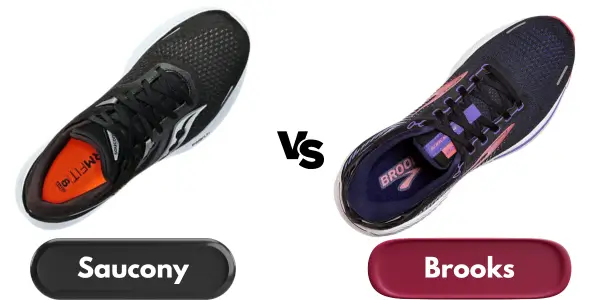
In contrast, Brooks offers a more generous toe box and is known for wider fitting options, accommodating a broader range of foot types and providing space for natural toe spread during a run.
Cushioning
In comparing the cushioning, it's essential to delve into the specific technologies and materials each brand employs to enhance fit and comfort for runners.
Here's what stands out:
- 1. Saucony: Their running shoes also feature the PWRRUN cushioning system, known for being plush yet springy. This technology provides excellent energy return thanks to its innovative composition, contributing to a more efficient stride.
- 2. Brooks: They use various materials like DNA LOFT, which ensures a soft landing, especially in the heel and midfoot areas. This makes Brooks a great choice for runners seeking a shoe fit that offers a cloud-like sensation.
- 3. Overall Comfort: Both brands prioritize comfort but approach it with different cushioned running shoes philosophies to cater to individual preferences.
Durability
Regarding durability, both Brooks and Saucony running shoes are recognized for their robust construction. Brooks models typically offer a lifespan ranging from 300 to 500 miles. Saucony shoes, on the other hand, average around 400 miles, although their new Endorphin Pro model is expected to last approximately 200 miles.
When weighing Saucony vs Brooks running shoe options, I consider the specific models—like the Saucony Ride or Brooks Ghost—which are both popular running shoes known for their resilience.
Brooks vs Saucony running shoes have unique qualities, but durability is a strong suit for both. Saucony recommends replacing every mile according to individual wear patterns, just as Brooks advises. This detail-oriented approach ensures runners can gauge their shoe's lifespan and performance accurately, maximizing the value of their investment in a durable running shoe.
Our Recommendations
Brooks Adrenaline vs Saucony Guide
The Brooks Adrenaline GTS 22 and Saucony Guide 10 are both stability running shoes, but they differ in design and technology. The Adrenaline GTS 22 offers plush cushioning with the GuideRails support system, ideal for a smoother, supportive ride. In contrast, Guide 10 features a firmer, responsive feel with dual-density foam, catering to runners preferring structured support and feedback.
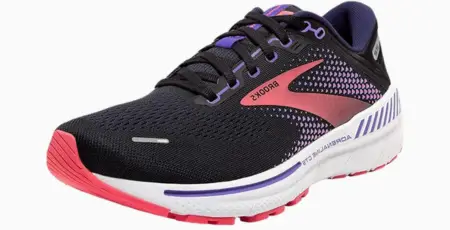
|
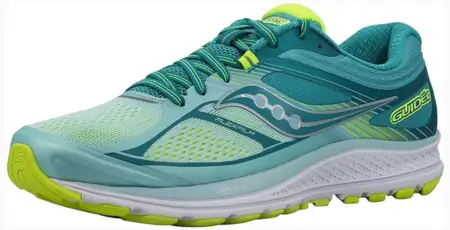
|
|
|---|---|---|
| Feature | Brooks Adrenaline GTS 22 | Saucony Guide 10 |
| Type | Stability | Stability |
| Use | Road Running | Road Running |
| Cushioning | Balanced, Soft | Responsive, Moderate |
| Support Type | GuideRails Support System | Dual-density foam |
| Upper | Engineered mesh | Engineered mesh |
| Midsole | DNA LOFT | EVERUN |
| Outsole | Rubber | TRI-FLEX rubber |
| Drop | 12mm | 7.1 mm |
| Weight (approx.) | 255g | 9.84 oz (279g) |
| Price |
Related: Brooks Levitate vs Adrenaline
Brooks Ghost vs Saucony Ride
Both the Brooks Ghost 15 and Saucony Ride 16 are designed for neutral runners and offer balanced cushioning. The main differences are typically found in the specific cushioning technology used and the slight variations in drop and weight.
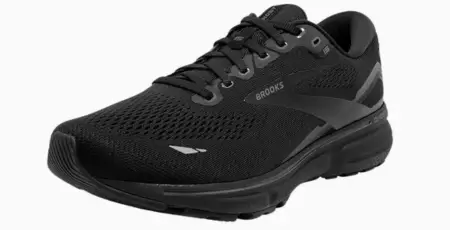
|
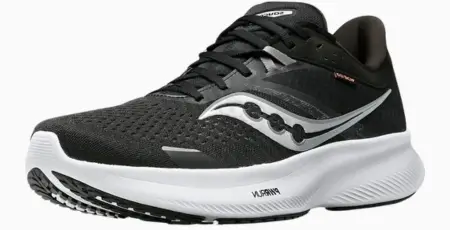
|
|
|---|---|---|
| Feature | Brooks Ghost 15 | Saucony Ride 16 |
| Type | Neutral | Neutral |
| Use | Road Running | Road Running |
| Cushioning | Balanced, Soft | Balanced, Responsive |
| Upper | Engineered mesh | Engineered mesh |
| Midsole | DNA LOFT | PWRRUN |
| Outsole | Rubber | TRI-FLEX rubber |
| Drop | 11mm | 8mm |
| Weight (approx.) | 10.1oz / 286.3g | 250g |
| Price |
Related:
Brooks Ghost vs Revel
Brooks Glycerin vs Saucony Cohesion
The Brooks Glycerin 20 is typically known for its high level of cushioning, making it suitable for runners seeking a plush and comfortable ride. In contrast, the Saucony Cohesion 13 offers moderate cushioning at a more budget-friendly price point. Both are neutral shoes designed for road running, but they cater to different preferences in terms of cushioning.
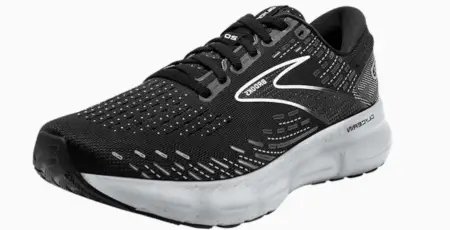
|
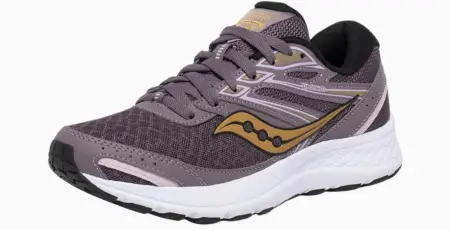
|
|
|---|---|---|
| Feature | Brooks Glycerin 20 | Saucony Cohesion 13 |
| Type | Neutral | Neutral |
| Use | Road Running | Road Running |
| Cushioning | High, Plush | Moderate |
| Upper | Engineered mesh | Synthetic and mesh |
| Midsole | DNA LOFT v3 | VERSAFOAM |
| Outsole | Rubber | Rubber |
| Drop | 10mm | 12mm |
| Weight (approx.) | 10.1oz / 286.3g | 252g |
| Price |
Related: Brooks Adrenaline vs Glycerin
Final Verdict
After thoroughly testing and analyzing Saucony and Brooks best running shoes, it's evident that each brand shines in unique ways, making them stand out in the competitive world of running footwear. While both brands hold their own merits, Saucony stands out for runners seeking a lightweight, high-performance shoe, particularly for those with narrower feet.
Conversely, Brooks is the best bet for athletes desiring maximum cushioning and a more accommodating fit, especially suited for wider feet and long-distance running. Deciding between Saucony vs Brooks hinges on personal preferences and specific foot needs, but rest assured, both brands offer exceptional quality and dedication to enhancing your running experience.
Frequently Asked Questions
1. Which is better for trail running, Saucony or Brooks running shoe models?
Both brands offer specialized trail shoes. Saucony provides shoes design option for those who want a natural feel with EVA foam cushioning, while Brooks trail shoes tend to be a bit sturdier with options that include a carbon fiber plate for added durability and speed.
2. How do I choose the right shoe between Saucony and Brooks for running?
Use the Fit Finder tools provided by both brands. Saucony and Brooks running shoes cater to different needs; deciding between the two depends on your foot shape, running style, and whether you prefer a shoe that helps you move naturally (Saucony) or one that might offer more structured support (Brooks).
3. Are Saucony and Brooks good options for casual shoes as well?
Yes, both brands are not just great shoes for running but also offer casual shoe options. They're designed for comfort and style, making them a versatile choice for everyday wear.
4. Can Saucony and Brooks shoes help runners improve their speed?
Yes, both brands offer speed shoes. Saucony's designs often include lightweight materials and responsive cushioning, while Brooks also features models with a carbon fiber plate to enhance propulsion, aiding runners in achieving faster speeds.
5. How often should I replace my Saucony or Brooks running shoes?
It's recommended to replace your running shoes every 400 miles. This ensures you're always running with adequate support and cushioning, which both Saucony and Brooks provide to help runners maintain their best performance.
Share this:







